Healthy and active aging
Healthy and active aging is about promoting healthy lifestyles throughout our lives and includes our eating and nutritional habits, as well as our levels of physical and social activity.
Taking care of your health
Active aging helps reduce the risk of obesity, diabetes and other non-communicable diseases that are increasing. Cardiovascular diseases and cancer are among the leading preventable causes of death in older people.
The World Health Organization (WHO) recommendations on physical activity for people over 65 years of age

Physical activity recommendations
For older adults, physical activity can be undertaken as part of recreation and leisure (play, games, sports or planned exercise), transportation (wheeling, walking and cycling), work, or household chores, in the context of daily occupational, educational, home or community settings.
Extremely beneficial
In older adults, physical activity confers benefits for the following health outcomes: improved all-cause mortality, cardiovascular disease mortality, incident hypertension, incident site-specific cancers, incident type-2 diabetes, mental health (reduced symptoms of anxiety and depression), cognitive health, and sleep; measures of adiposity may also improve.

“In older adults, physical activity helps prevent falls and falls-related injuries and declines in bone health and functional ability.”
Older people should partake in regular physical activity
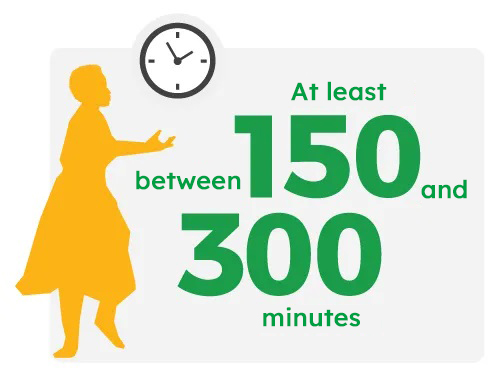
Weekly Activity
Older adults should do at least 150–300 minutes of moderate-intensity aerobic physical activity; or at least 75–150 minutes of vigorous-intensity aerobic physical activity; or an equivalent combination of moderate- and vigorous-intensity activity throughout the week, for substantial health benefits
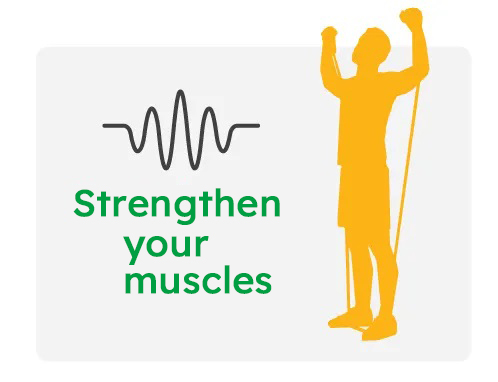
Muscle Strengthening
As part of their weekly physical activity, older adults should do varied multicomponent physical activity that emphasizes functional balance and strength training at moderate or greater intensity, on 3 or more days a week, to enhance functional capacity and to prevent falls.

More than 300 minutes
Older adults may increase moderate intensity aerobic physical activity to more than 300 minutes; or do more than 150 minutes of vigorous-intensity aerobic physical activity; or an equivalent combination of moderate and vigorous intensity activity throughout the week, for additional health benefits.
Good practice statements
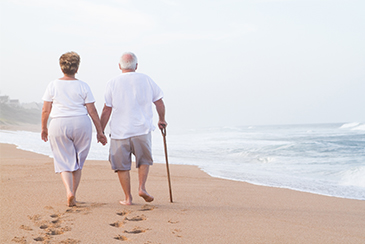

Doing some physical activity is better than doing none.
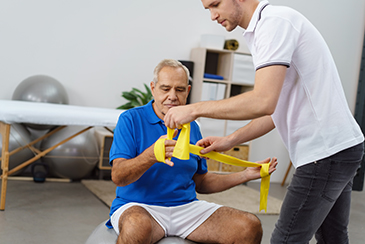

If older adults are not meeting the recommendations, doing some physical activity will bring benefits to health.
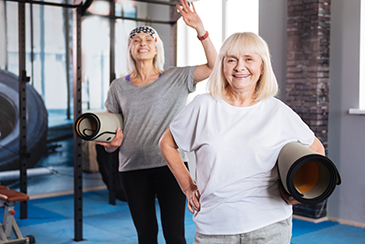

Older adults should start by doing small amounts of physical activity, and gradually increase the frequency, intensity and duration over time.


Older adults should be as physically active as their functional ability allows, and adjust their level of effort for physical activity relative to their level of fitness.
We can summarize the benefits of physical activity in older people, in the following aspects
(Marcos, Frontera and Santonja, 1995)
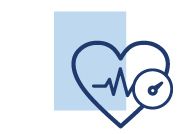
Lower blood pressure
It lowers blood pressure (or normalizes it, where appropriate), due to the opening of capillaries -less peripheral resistance-, achieving elasticity in the arteries, and facilitating the loss of sodium and chlorine through sweat.

Lowers the risk of heart attacks
It causes a reduction in heart rate (Jiménez et al., 2000) at rest, and better perfusion -more oxygen- to the heart muscle, which reduces the incidence of myocardial infarction.
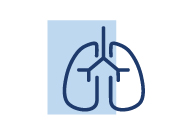
Lung capacity
Improvement of respiratory capacity -increasing vital capacity, "lung" elasticity, strength in the respiratory muscles, which favours the evolution of respiratory disorders typical of aging.

Healthy and active aging
Healthy and active aging is about promoting healthy lifestyles throughout our lives and includes our eating and nutritional habits, as well as our levels of physical and social activity.

Better Oxygenation
Increases maximum VO2, improving your functional capacity and reducing fatigue in daily life activities: walking, climbing stairs, shopping etc.



